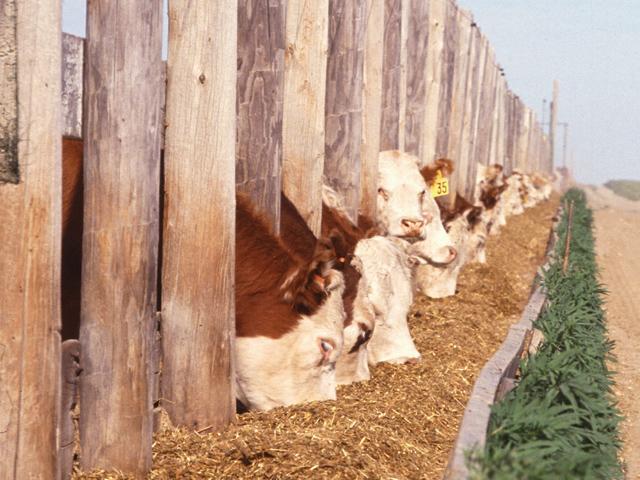Call the Market
What's in Store for the 2022 Feeder Cattle Market?
There are times in the market when you feel comfortable making projections and rely on the technical and fundamental data to shed light on what may come next. When analyzing the markets, there are also times when you clearly understand that you need a crystal ball, a fifth of whiskey and dice to roll. When looking to the 2022 feeder cattle market, it may be easier to take the dice.
The pandemic may be behind us, but that's not to say that the world's chaos has subsided. From trying to decipher what Russia President Vladimir Putin will do next in Ukraine, to trying to gauge when the western half of the nation will be rid of drought conditions -- all while grimly keeping tabs on the corn market, feedlots' cost of gains, the nation's weakening economy and rising inflation -- there's a lot of volatile moving pieces to today's market.
Time doesn't stop for the market to become more understandable, nor does it wait for its participants to become more comfortable. Regardless of the market's future, trade continues to develop, so we must stay engaged, even when the market's answers can only be found with time.
To stay engaged and to maintain a sober reality of what is happening, it's important to consistently weigh both the bullish and bearish factors influencing the market.
So, let's begin.
BULLISH
Three bullish factors that continue to bode well for the feeder cattle market are: beef cow slaughter, supply/demand mechanics and U.S. beef exports.
P[L1] D[0x0] M[300x250] OOP[F] ADUNIT[] T[]
Regardless of whatever pressures the feeder cattle market faces, it's hard to argue that, with our nation's cowherd being culled at levels not seen since the 1980s, feeder cattle prices won't see a bump. Thus far in 2022, there have been 1,413,300 head of beef cows slaughtered. That's 179,100 head more than at the same time a year ago and 309,800 head more than the market's five-year average.
To put this into perspective, 2021 was a record year for beef cow slaughter. Out of the 52-week calendar year, there were 18 weeks in 2021 when beef cow slaughter exceeded 70,000 head, which is incredibly unusual. Thus far into 2022, there's only been one week when beef cow slaughter hasn't exceeded 70,000 head.
That leads us to the second point: Given that there are significantly fewer beef cows contributing to the nation's feeder cattle supplies, demand for these cattle should strengthen, which should send prices higher, too.
Third and last of the bullish factors, we cannot overlook the importance of a strong export market. As published by the U.S. Meat Export Federation, from January through March, beef exports in 2022 have totaled 281,099 metric tons, which is 7% greater than that of a year ago. Again, 2021 was a stellar year for beef exports, so seeing year-over-year growth is incredibly impressive and is a strong supportive factor in our U.S. beef cattle market.
BEARISH
Three bearish factors that continue to weigh heavily on the feeder cattle market are: corn prices/high feed prices, consumer demand and imports.
As the price of corn continues to show no mercy, given that it's traded anywhere from $7 to $8 per bushel as of late, feedlot owners grit their teeth as they realize that their cost of gains could range anywhere from $1.40 to $1.60 per day. With these types of costs, feedlots need to see substantially higher premiums in the live cattle market than where prices are currently trending.
It would be one thing if corn was the only expensive input in their ration, but given how depleted hay supplies are and how the West is still crippled by drought, all feed inputs are higher. According to the USDA NASS' Crop Production report, nationally, the May 1 hay stocks are down 7% under last year -- the fifth lowest May 1 inventory on record.
Second, consumer demand amid a weakening economy and unbridled inflation remains a question mark for the market. U.S. consumers have been relentless in their beef buying, even through the last two years when prices became astronomically higher. As consumers feel the pinch (or should I say punch) of inflation, beef prices have wavered. As feedlots look at $7 corn, the last thing they want to hear is that consumer demand could be weakening, as it means that fat cattle prices could be up for question, too.
Last, but certainly not least of the bearish factors is we can't overlook the influence of imports into our marketspace. To date, the U.S. has had 482,643 metric tons of fresh beef imported into the country (up 25% from a year ago), and to date, the country has had 35,406 mt of processed beef imported into the country (up 27% from a year ago).
Weighing out the pros and cons of any market is something that we all are accustomed to, but in times like these, decisions can seem harder to make. While it may be tempting to disengage yourself from the market, as its answers aren't clear, I'd argue that now is the time to lean in and search for answers, even if that requires more time.
ShayLe Stewart can be reached at ShayLe.Stewart@dtn.com
(c) Copyright 2022 DTN, LLC. All rights reserved.



